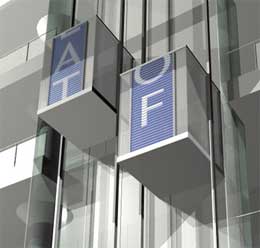Asia Ward
Like most campuses, we have a small art gallery that shows a wide variety of work, ranging from installation to rock concert posters. I try to make it to as many shows as possible, and I'm usually not disappointed. The recent show, however, is quite good!

Titled Asia Ward - Interactive Sculptures, the exhibit features a collection of hand made stuffed animals, each with internal parts that move and make sound. All of the fabric and parts have been pirated from toys and stuffed animals found at flea markets.
Ward doesn't simply try to recreate stuffed toys that we're familiar with, like My Little Pony for example. Rather, she combines bits and pieces from many different sources to create a new being, one that is given some small amount of life from the simple electronics and mechanical gadgets that she places inside. All of them require some interaction in order for them to come to life, but some react in startling ways with their environments.
One of my favorites was titled "Lonestar" and it consists of a fish-like animal on a felt bed. When activated, Lonestar's chest moves (as if breathing) and it's eyes light up. When lifted slightly off the bed, it begins to flap its tail pretty rapidly, as if it is a fish out of water. This is achieved via a magnetic sensor that has a very small range (a few inches).
Other examples include a four legged creature that walks for a brief time, then stops until it senses a movement, then starts up again, a teddy bear that picks up (and plays through a small speaker) radio signlas when its head is moved backwards, a mole-like creature that honks like a pig and rolls its eyes when placed in bright light, and a turtle that also reacts to light.
Ward nearly fetishises these works, and consequently they are unfortunately displayed in locked boxes. She did demonstrate them to me yesterday, and they are really wonderful! She is aware of the dissonance of locking them away when they demand interaction, so there is a video running in part of the room in which all of the creatures are shown "alive". Ward is concerned about the longevity of the objects, and she mentioned many times that she expects them to outlive her.
Currently, she is working with the Minnesota Science museum to help develop "crickets", which are programmable chips. She has been increasingly frustrated with the limitations of the found electronics in many toys - while she's created chaotic situations for them, she'd like to exert more control over her beings (another theme that she mentioned a numer of times), and eventually she wants to have them interact and especially communicate with one another.
A really interesting exhibit!

Titled Asia Ward - Interactive Sculptures, the exhibit features a collection of hand made stuffed animals, each with internal parts that move and make sound. All of the fabric and parts have been pirated from toys and stuffed animals found at flea markets.
Ward doesn't simply try to recreate stuffed toys that we're familiar with, like My Little Pony for example. Rather, she combines bits and pieces from many different sources to create a new being, one that is given some small amount of life from the simple electronics and mechanical gadgets that she places inside. All of them require some interaction in order for them to come to life, but some react in startling ways with their environments.
One of my favorites was titled "Lonestar" and it consists of a fish-like animal on a felt bed. When activated, Lonestar's chest moves (as if breathing) and it's eyes light up. When lifted slightly off the bed, it begins to flap its tail pretty rapidly, as if it is a fish out of water. This is achieved via a magnetic sensor that has a very small range (a few inches).
Other examples include a four legged creature that walks for a brief time, then stops until it senses a movement, then starts up again, a teddy bear that picks up (and plays through a small speaker) radio signlas when its head is moved backwards, a mole-like creature that honks like a pig and rolls its eyes when placed in bright light, and a turtle that also reacts to light.
Ward nearly fetishises these works, and consequently they are unfortunately displayed in locked boxes. She did demonstrate them to me yesterday, and they are really wonderful! She is aware of the dissonance of locking them away when they demand interaction, so there is a video running in part of the room in which all of the creatures are shown "alive". Ward is concerned about the longevity of the objects, and she mentioned many times that she expects them to outlive her.
Currently, she is working with the Minnesota Science museum to help develop "crickets", which are programmable chips. She has been increasingly frustrated with the limitations of the found electronics in many toys - while she's created chaotic situations for them, she'd like to exert more control over her beings (another theme that she mentioned a numer of times), and eventually she wants to have them interact and especially communicate with one another.
A really interesting exhibit!








